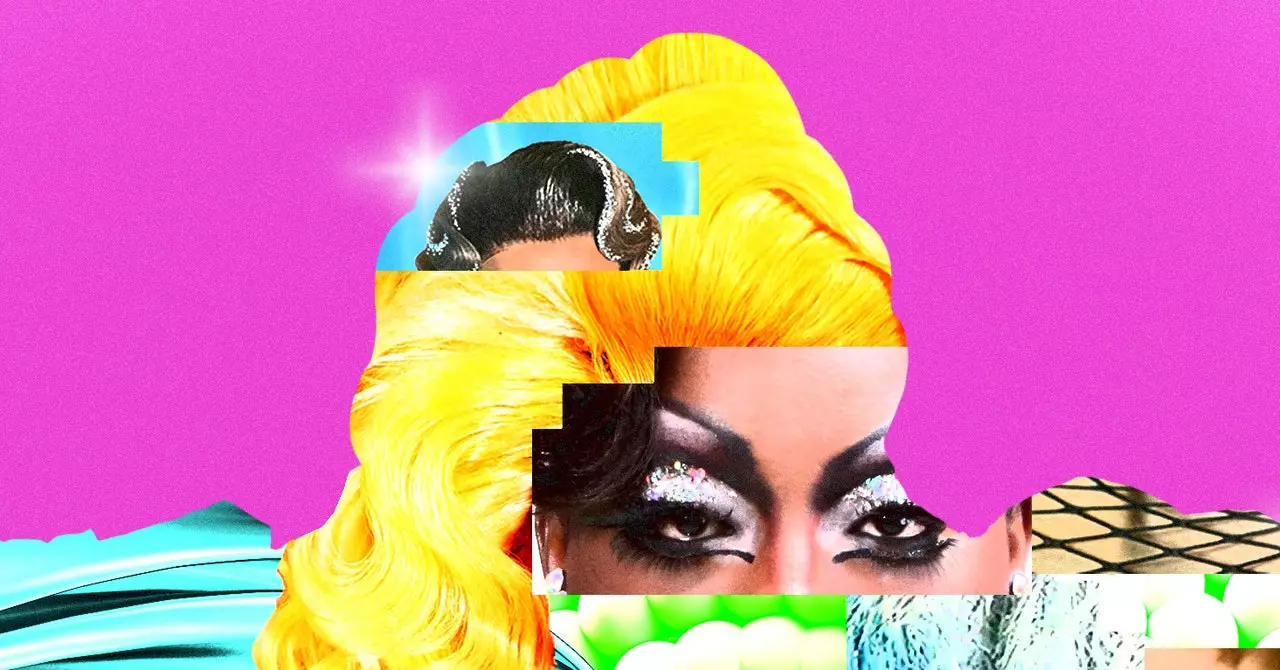In the world of social media, there is a growing trend of AI-generated content that blurs the lines between what is real and what is not. This phenomenon is particularly evident in the realm of faux Drag Race, where creators are crafting digital personas that some fans are becoming incredibly passionate about. The allure of these creations lies in the seamless blending of the real and the unreal, leaving followers questioning what is genuine and what is manufactured.
Creators like Michael, who is behind the popular Instagram page Fantasy Drag Race, have noted the intense reactions from fans who often mistake their AI-generated queens for real individuals. Michael mentions that fans have gone as far as asking for a queen’s actual Instagram handle, highlighting the level of immersion and attachment that some followers have developed for these digital personas. However, this passion is not without its drawbacks, as Michael has also received backlash from individuals who believe that AI Drag Race is taking away opportunities from real drag queens.
As an illustrator himself, Michael is cognizant of the looming threat that AI technology poses to his profession. However, he argues that his Instagram project is not directly depriving human creators of income, as the decision to support AI Drag Race over live drag performances ultimately lies with the individual viewer. Similarly, other creators like Más have faced criticism from peers within the community for not taking the creation process seriously enough. Despite the pushback, Más remains steadfast in her belief that the opinions of others should not sway her creative vision.
One of the major challenges faced by creators in the AI-generated Drag Race space is the murky legal terrain they operate in. While some individuals assert that their work is parody and attempt to absolve themselves of copyright infringement with disclaimers, others acknowledge the tenuous nature of their content. Several accounts, including those featuring Disney characters, have already been removed from Instagram, prompting anxiety among creators like Boopy. Despite these uncertainties, creators like Shayne from Horror Drag Race defend their work as a fusion of two distinct mediums that cater to a diverse audience.
Interestingly, the influence of AI-generated Drag Race is extending beyond just social media fandom. Established drag queens like Mhi’ya Iman Le’Paige have embraced AI-inspired looks on mainstream platforms like Drag Race, bridging the gap between traditional drag and digital innovation. Additionally, collaborations between AI creators and real-life queens underscore the evolving landscape of drag as a form of artistic expression that transcends physical boundaries.
The rise of AI-generated Drag Race presents a nuanced reflection of the evolving intersection between technology and creativity. While the debate surrounding the ethics and legality of AI content creation continues, there is no denying the impact that these digital personas have had on both fans and industry professionals alike. As the boundaries between reality and fiction continue to blur, it remains to be seen how the world of drag will adapt to this new era of digital artistry.


Leave a Reply